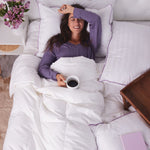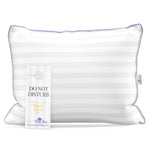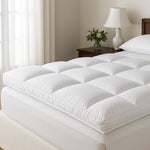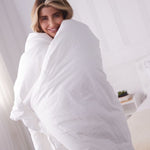You have no items in your shopping cart.
The ideal temperature for sleep is generally considered to be between 60 and 67°F (15 to 19°C). This range supports the body’s natural tendency to cool down as it prepares for sleep, which can help with falling asleep faster and staying asleep longer.
Here's how temperature affects sleep quality:
-
Cooler Temperatures: A cooler environment can aid in deeper stages of sleep, especially slow-wave sleep, which is restorative. This temperature range helps prevent overheating, which can disrupt sleep cycles.
-
Humidity Consideration: If the air is too dry or too humid, it can also affect sleep quality. Ideal humidity is typically around 30-50%.
-
Age and Preferences: Babies and older adults might prefer it a bit warmer, around 65–70°F (18–21°C). If you tend to feel colder or hotter than others, adjusting your bedding and sleepwear can help keep your body in the right range for restful sleep.
Setting your room temperature within this range can make a notable difference in sleep quality, and using light blankets or layers can add flexibility to stay comfortable.
The ideal temperature for sleep is generally considered to be between 60 and 67°F (15 to 19°C). This range supports the body’s natural tendency to cool down as it prepares for sleep, which can help with falling asleep faster and staying asleep longer.
Here's how temperature affects sleep quality:
-
Cooler Temperatures: A cooler environment can aid in deeper stages of sleep, especially slow-wave sleep, which is restorative. This temperature range helps prevent overheating, which can disrupt sleep cycles.
-
Humidity Consideration: If the air is too dry or too humid, it can also affect sleep quality. Ideal humidity is typically around 30-50%.
-
Age and Preferences: Babies and older adults might prefer it a bit warmer, around 65–70°F (18–21°C). If you tend to feel colder or hotter than others, adjusting your bedding and sleepwear can help keep your body in the right range for restful sleep.
Setting your room temperature within this range can make a notable difference in sleep quality, and using light blankets or layers can add flexibility to stay comfortable.








